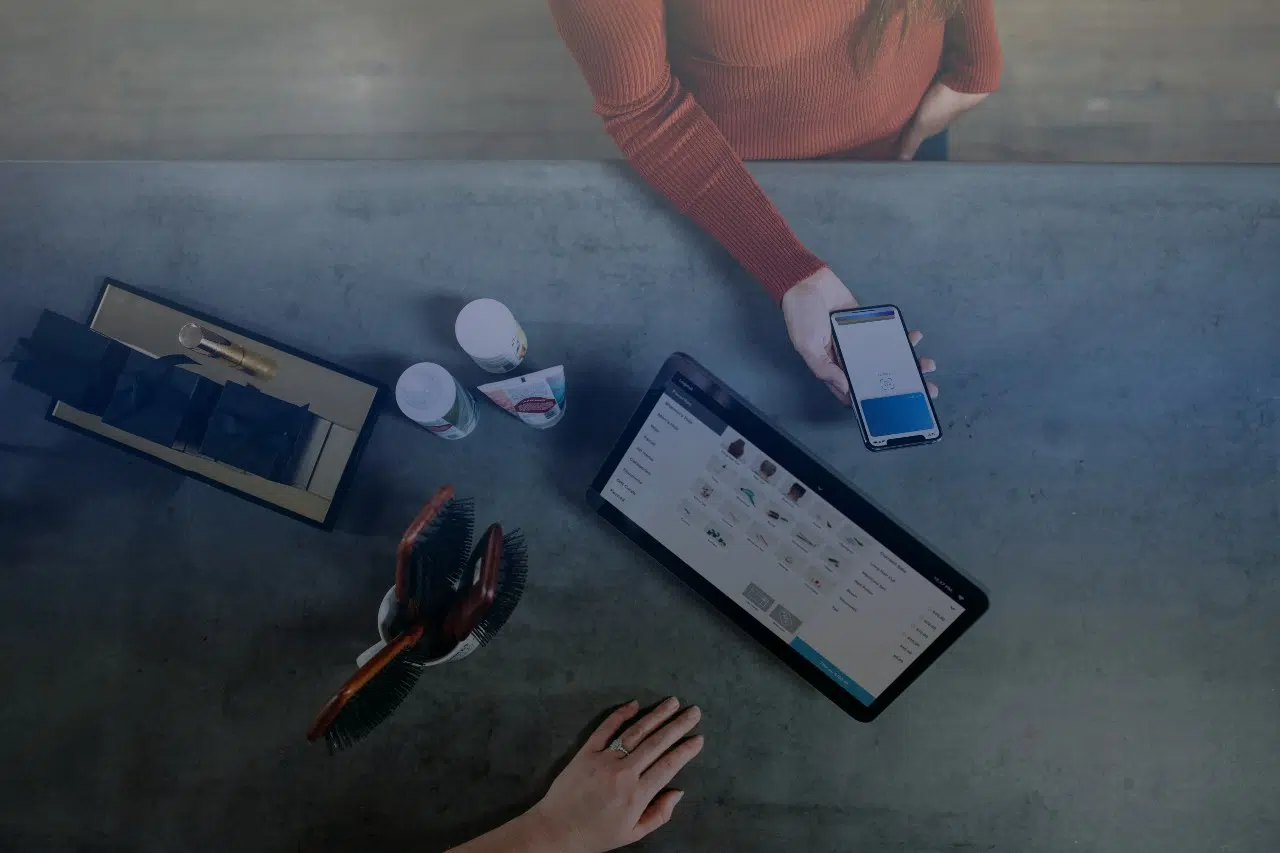
The Power of Marketing Funnels
How great marketing made me buy a portable coffee machine I wasn’t sure I needed
Transcript:
Hi there, I’m often asked what the secret is to developing and deploying really powerful digital marketing strategies.
And the reality is that one can’t even begin to answer that question without understanding the power of marketing funnels. In fact, I’m going to share with you a story about its extraordinary impact on me and how I ended up buying a coffee machine that I wasn’t quite sure I needed at the time. I’m happy I did, but let’s explore the experience together.
But first up, I want to just get clear on a fundamental idea underpinning all marketing. There are three core drivers of growth. You need to generate traffic to your site. You need to convert that traffic into sales. And you need to grow customer value over time.
How exactly do you tap into these growth drivers?
The answer is that you need to guide customers along a journey. I like to call this your customer journey, but it’s also known as your marketing funnel. Because like a funnel, it starts wide and then narrows as you move further down the funnel.
People often depict this funnel or this journey as a three-stage process. There’s the top of the funnel, which sometimes goes by the acronym ToFu, where prospects don’t know about you and you need to create awareness of your solution. Then there’s the middle of the funnel or MoFu where they’re aware of you but you need to create desire for your solution. And then there’s the bottom of the funnel or BoFu, where need to build trust and confidence in your solution.
And that’s a helpful framework, but I think we need a slightly more nuanced approach, a nuanced version of this funnel. And also this funnel doesn’t really consider what happens after the sale is made, which is a really important part of the customer journey. And that’s why I find it helpful to think of the customer journey or the funnel as a six phase, partly unconscious mental process that customers go through when making purchase decisions.
You start by reaching a wide range of prospects to build awareness of your product and to spark desire for your offering. You then guide those prospects through your sales process by helping them evaluate the offering to build trust with the intention that some of them will commit to becoming paid customers. And then you want those customers to return for more and ultimately become loyal advocates referring you to others. Now, that’s the broad process. But let’s delve into each of these phases in a bit more detail.
And to illustrate this, I’m going to share a recent story about my own experience with a marketing funnel as I mentioned. I’m going to give you a blow by blow walkthrough of my journey towards purchase. And I have to say that it was actually fascinating for me and a little scary trying to retrace the steps that led me to buy. And think it really sheds light on the power of marketing funnels.
Bit of background. One of my mates is a coffee aficionado. Now, some people accuse us Melbournians of being coffee snobs, but we like to think of ourselves as aficionado. But he’s genuinely a coffee guru. In fact, he recently turned his hobby into a side business, selling fresh home delivered coffee beans. This is a bag of his brew here. And he’s been on my back for ages about getting a decent coffee machine so I can have what he calls real coffee not my dodgy Nespresso pods. Now, Nespresso pods are so clean and easy to use but I did understand his point. It’s not as good as cafe coffee and so I was open to another solution.
I’d also recently been camping with my boys and saw someone with a portable coffee machine that takes fresh ground coffee and with a bit of hot water makes a great coffee. So, I was keen to explore up that portable option a little further.
Now, it’s important to realise that in this situation I’m at the top of the funnel. In other words, I’m at the very start of the process. Prospects at this stage are unaware of you and your solution. And some may not even realise they have a problem that requires a solution. So ,they’re gonna need marketing that focuses on creating awareness of the problem as well as awareness of your solution. And you can do this by promoting content on social media by ensuring you come up on Google when people search and so on. Lots of strategies for building awareness.
In my case, I understood my problem. You know, it was I didn’t have a way to make myself good coffee at home or when camping. But I wasn’t aware of the products out there, and to be honest, I wasn’t even sure if I really wanted to fork out money for something when I had a working Nanopresso machine at home.
So, anyway what do I do? I jumped online to do a bit of research. How? The same way that 90 plus percent of people do, a Google organic search. I type in, handheld coffee machines, and a slew of search results arrive at the top of the Google Shopping ads with images and photos of products. They’re what you sometimes call your pay-per-click ads. And then below them are the organic listings. They’re the one that Google’s algorithm features based on relevance to my search and some other factors.
I click on the SEO listing for a business called Wacaco and I explore their product called Nanopresso which looks kinda cool. It’s a bit over a hundred dollars and it seems to do what I’m looking for. But I’m not making any decisions just yet, right? I’m just in research phase and I click off the site for now and I get back to work.
By the way important point, they would have done well here to have an opt-in form that pops up before I left the site offering me some kind of incentive, like a discount, say, $10 off for example in exchange for my contact details. I may well have signed up for that which would have enabled them to continue to nurture the relationship to build trust with interesting and helpful content and gently edge me towards a sale, but they didn’t.
Anyway, what’s crucial is that I’ve now moved to the middle of the funnel. I’m now fully aware of the product but I’m certainly not ready to take action. You see, prospects at this stage are aware of the problem and your solution. For example, they may have clicked on an ad, they may have read a blog article or they may have visited your site, but they haven’t taken action. And so for these prospects, you need to build desire for your solution. Because what’s happening is they’re asking at least subconsciously the question, do I really need you?
Anyway, back to my scenario, the next morning as I’m having my espresso shot and reflecting on the fact that it’s not as good as café made coffee, and I can almost hear my mate’s voice saying to me, you can’t be a good person if you drink bad coffee. But I don’t take any action. I’ve got a busy day ahead and I get to work.
At my morning tea break, I pull out my phone, I check the news, I jump on Facebook for a minute and scroll through my feed. Sure enough, I see an ad for the Nanopresso and includes a video, which I click on showing how it produces rich creamy cafe quality coffee simply and easily.
The Facebook pixel on their site has obviously tracked me and is now delivering me desire-building Facebook remarketing ads on the basis that I’m in the middle of the funnel. On reflection of course, I know what they’re trying to do. But at the time I wasn’t really thinking about it consciously and the video did make it look quite enticing. So, I click on the Learn More button and it takes me back to their site.
At this point, I’m genuinely interested but you know, it’s over a hundred dollars and, you know, do I really know if it produces great coffee? You know, maybe it’s just a gimmick, maybe it’s annoying or difficult to use. I decided to see if there were any how-to videos that actually show me how it works.
And now in case you hadn’t realised by this point I’m at the bottom of the funnel. Prospects at this stage, like me, are trying to evaluate the product to work out if we trust their claims. Your job as a marketer at this point is to build trust and confidence in your solution by enabling prospects to evaluate it. And this is where testimonials, case studies, product demonstrations, and free trials come in.
And so I Googled, Nanopresso. I skip past the ads and the organic (SEO) results looking for some how-to or demo videos so I can really see how it works. Google features a range of videos and so I click on one and it takes me to YouTube and the video shows that the product is actually quite easy to use.
But again, they produced this video so I’m not exactly sure how much weight to give it. Now, by this time morning tea is up so I click off the site and I get back to work. And so a number of days passed and I still haven’t bought anything. But I’m at the bottom of the funnel. So, I’m still a genuine prospect for them if they can enable me to evaluate them properly to build enough trust.
As I’m scrolling through my Facebook feed a few days later, I see an organic post from them with a glowing customer testimonial. Interestingly, I’m now seeing their organic posts because I’ve clicked on one of their ads in the past. Otherwise, I wouldn’t be receiving their organic posts. And by the way, if I would have been on Instagram, I would have seen a heap of similar organic posts. So, they’re clearly operating on multiple channels which is a good thing.
Anyway, I clicked to their Facebook Page and I see another product demonstration video. I watch a minute or two of it it really does look impressive I have to say. So, I decide to jump back onto their site and I look at the Nanopresso again, and it seems to kind of glow and shimmer almost like it’s winking at me and gently whispering, you know, buy me, you’re going to love me. But the logical, analytical side of my brain intervenes and says, hang on a second, Joel, think about this rationally. You see, it’s usually our emotion, our desire that sparks our initial interest, but then our rational side kicks in to evaluate it and assess the risk.
As I’m reading the product specs, I realise that it can only handle a single shot of coffee. Now I have to say, that’s a deal breaker for me. Now, what if I want a double shot every so often? It means I’d have to go through the whole process twice. And the first shot is going to be cold by then. And that’s when I noticed their accessories at the bottom of the product page. They have what’s called a Barista Kit which has a large water holder for long blanks and a double shot add-on, and there’s also a carry case to keep it safe. Suddenly it seems quite interesting again.
Now, this of course is their cross selling strategy executed by their product recommendation engine on this side. But the price is really starting to add up now if I include these accessories. And so I think to myself, look, I’m just going to start with the basic machine and I can always upgrade later. So I take the plunge. I begin filling out their checkout page. Of course, at this moment, a fight breaks out in the next room between two of my kids because they’re homeschooling at the moment. And I leave the page to play mediator.
Now, I’m not trying create unnecessary suspense here by dragging out this purchase journey. This is actually what happened. And some version of this happens to many of us when we shop online. At this point, I’m basically convinced I’m almost a customer but I haven’t completed the sale. And this is where great marketers help nudge prospects towards commitment by reminding them to take action, by reducing risk where possible, and by creating a sense of urgency, for example, they use things like money back guarantees, limited time discounts, and so on.
The kids finally settle and I close the page and go back to work. An hour or two later an email hits my inbox reminding me to complete my order. You see, because I entered my email on their Shopify checkout page even though I didn’t complete the order, their automated abandoned cart emails are triggered and so I receive this. in fact, their abandoned cart process wasn’t limited to email marketing, I also receive this SMS message on my phone a minute later.
But I was in the middle of a task and I ignored it. In fact, I didn’t think about it until the next day when I received the second automated abandoned cart email and SMS and it was offering a 5% discount. And I thought, you know what? I’ve got 10 minutes to spare, I’m just going to get it. And so I clicked through and I’ll admit, I did notice the ‘might also interest you’ section at the bottom. And so I scroll down and the Barista Kit and the protective case called out to me again. Now not having the ability to have that double shot would just be so annoying. And so I decided to add them both to my order which almost doubled the transaction value and well, the rest is history.
And I have to tell you that my wallet is lighter, but I’ve been drinking great coffee ever since. And if you want to see my personal Barista Kit, you can see it here and I’ve even got my carry case.
Now, interestingly, will they continue to move me through the last two stages of the funnel? For example, will they get me to return again to buy more? And will I become their advocate by referring them to others?
I wonder what their strategy will be. Only time will tell. But what we can already see clearly is the power of the marketing funnel. Had I not been nurtured and guided with the right marketing at the right time based on where I was in the journey, I doubt I would have made the purchase. And so the question for you is how can you design your marketing funnel to take your prospects on a journey that’s right for them?
Now, if you’ll please excuse me, I’m going to go and enjoy my double shot espresso. Good luck!
Get a completely free strategy session here with a trusted Google Ads agency based in Melbourne.



